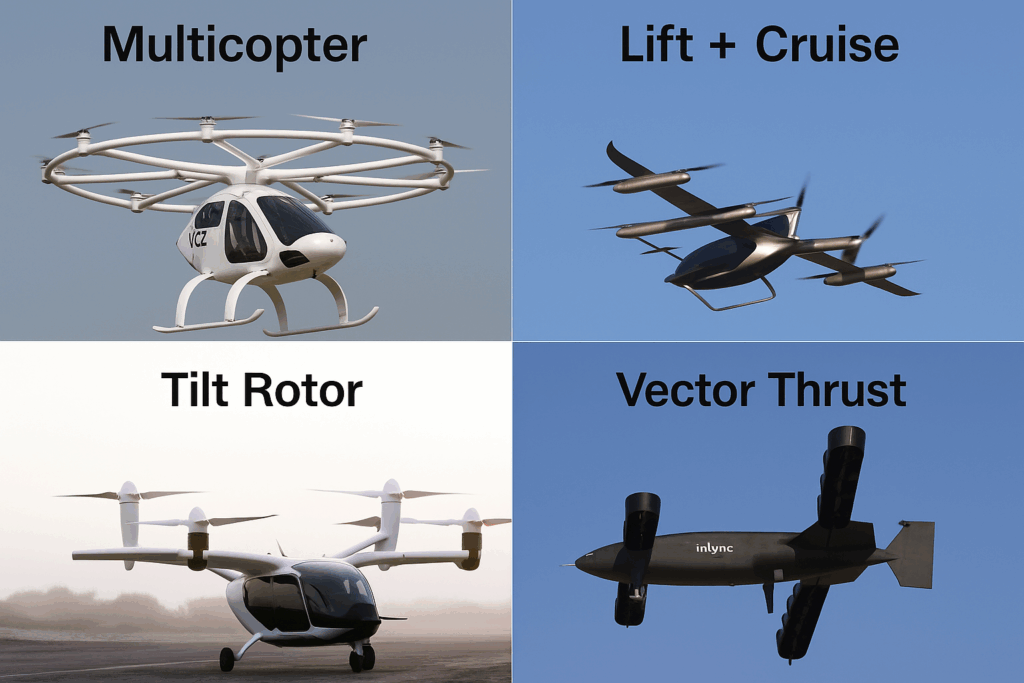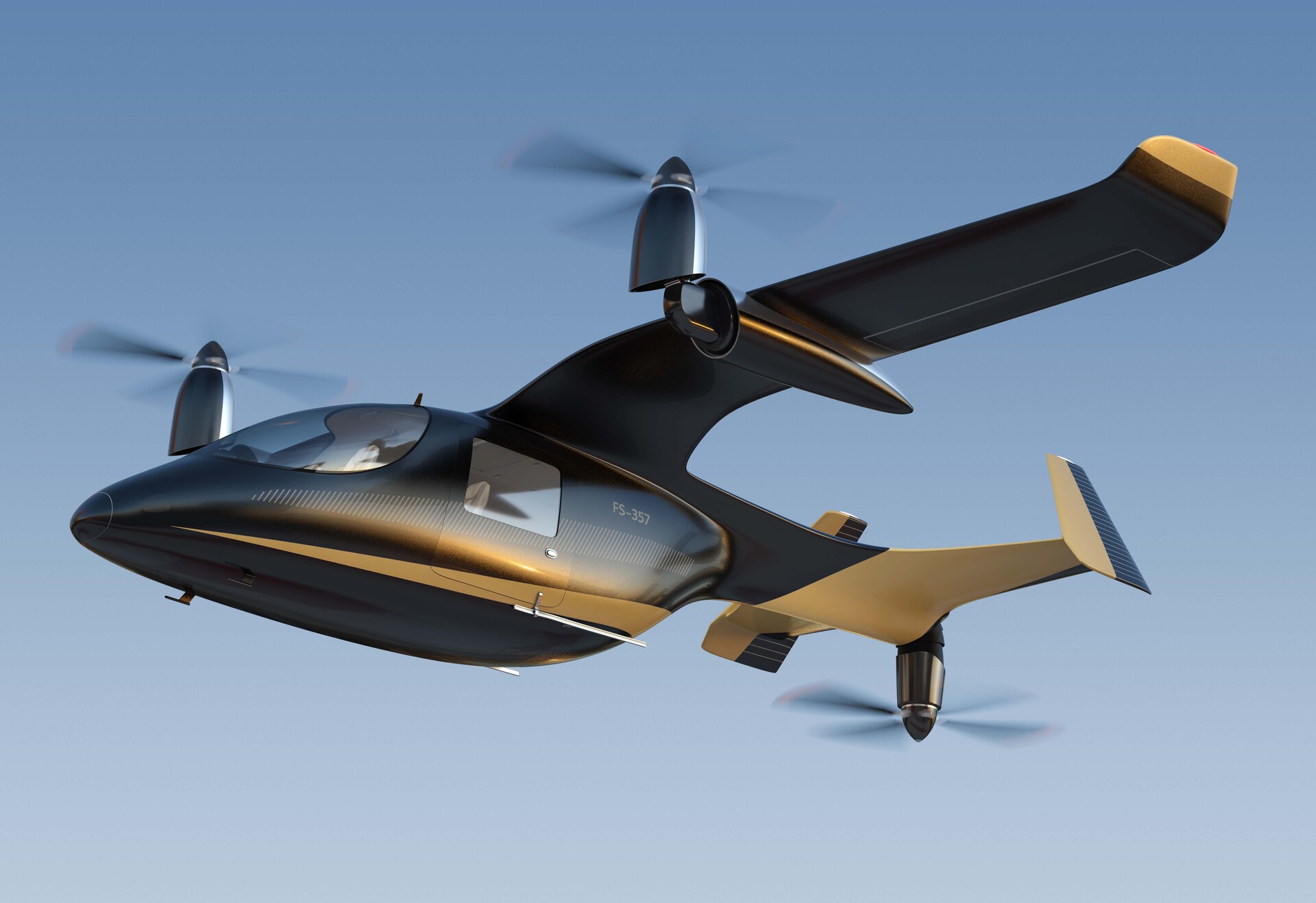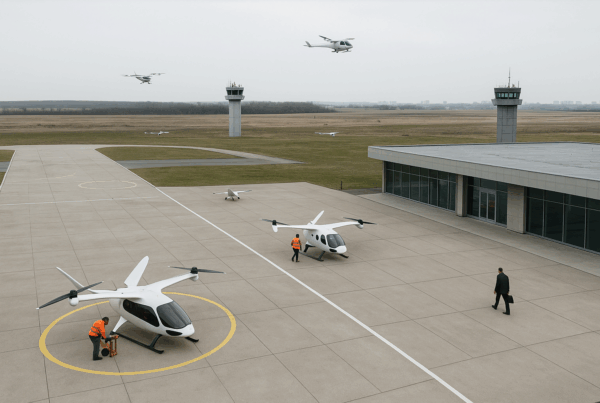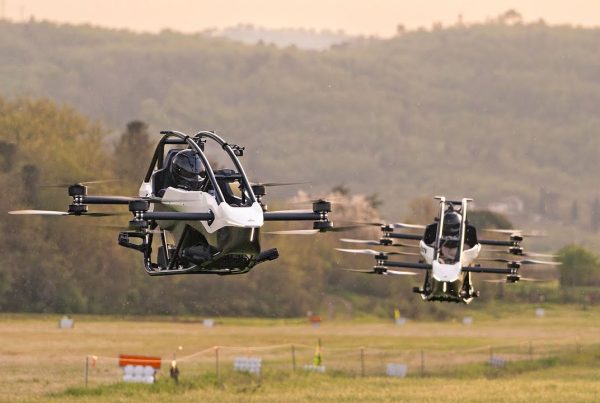What is it?
eVTOL air taxis are electric Vertical Take-Off and Landing aircraft designed for short-range, on-demand passenger transport—typically within or between urban and regional areas. Think of them as aerial ride-hailing services: faster than a car, quieter than a helicopter, and designed to operate from compact landing pads (vertiports). Several different air taxi aircraft design configurations have emerged to address how vertical and forward flight is achieved. According to civil aviation authorities, these designs are expected to be classified as either a powered-lift aircraft or rotorcraft. The key difference being that powered-lift aircraft generate lift using non-rotating aerofoils during horizontal flight.
These aircraft are:
- Fully electric or hybrid-electric
- Designed for 2–6 passengers
- Operated by a pilot initially, with future plans for autonomy
They are a central component of the emerging Advanced Air Mobility (AAM) ecosystem.

How does it work?
eVTOL air taxis use distributed electric propulsion systems to lift vertically, transition to horizontal flight, and land with precision. Operations involve:
- Short take-off and landing times using minimal space
- Flight automation systems for navigation and stability
- Digital booking platforms integrated with urban mobility apps
- Vertiports with fast charging stations, passenger boarding areas, and air traffic control connectivity
Flights are generally 5 to 50 km in range, designed for high-frequency, short-duration trips across cities or between city clusters.
Why is this important?
eVTOL air taxis aim to transform urban mobility, offering:
- Drastically shorter travel times in congested areas
- Environmentally friendly aviation through all-electric flight
- New options for intermodal transport, linking air, rail, and ground systems
- Resilient and decentralized networks for medical, business, or emergency travel
- A catalyst for aerospace innovation and green infrastructure investment
They represent a paradigm shift: aviation as a daily utility, not just for long-haul or luxury travel.
What can we expect in 5–10 years?
- Commercial launches in select cities with certified aircraft and routes
- Piloted services operating in controlled air corridors with fixed pricing
- Development of urban vertiport networks co-located with train stations, airports, and business hubs
- Integration into multimodal apps for seamless door-to-door journeys
- Progressive shift toward autonomy once regulatory and public trust milestones are met
- Regional routes expanding beyond city centers to suburbs and satellite towns
Cities that embrace infrastructure, public-private partnerships, and regulation readiness will likely lead adoption.
What else should I know about this?
- Certification is ongoing: Safety and regulatory clearance by authorities like EASA, FAA, and CAAC is essential and progressing steadily.
- Noise and community acceptance are key hurdles; most designs emphasize low acoustic footprints.
- Operational models vary: From point-to-point shuttle routes to ride-hailing-style bookings via apps.
- Costs are expected to drop significantly over time, moving from premium pricing to mass-market access.
- Infrastructure planning is critical—including vertiports, grid support, and urban airspace integration.
eVTOL air taxis are not just aircraft—they’re a new layer of urban infrastructure, built to move people faster, cleaner, and more efficiently in tomorrow’s cities.
As NexAvian continues to establish international partnerships with these manufacturers and operators, the future will soon offer these air taxi services!




